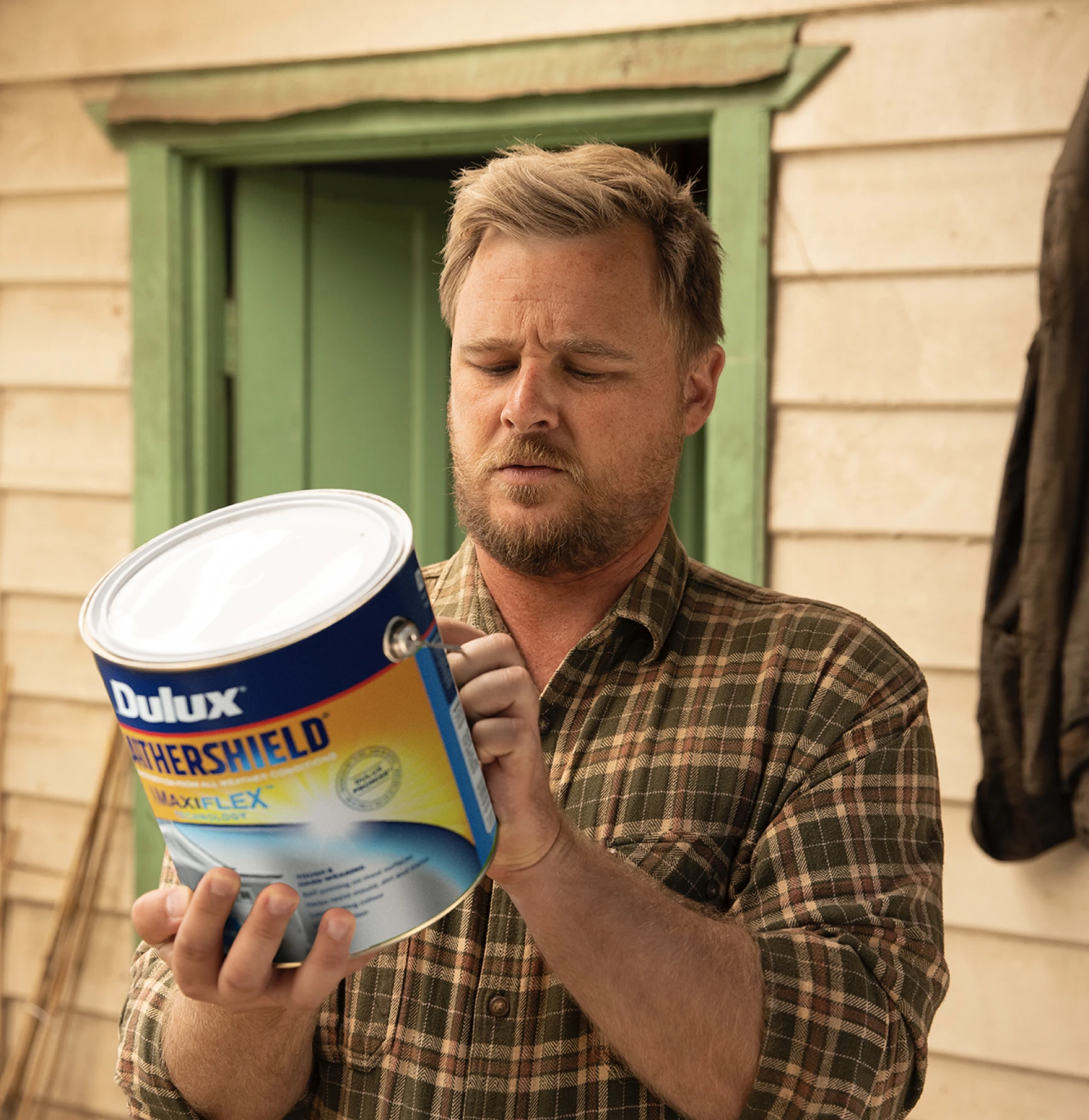
Helpful tips for your paint project
Following these tips will help you achieve the quality paint job you are after. When you have finished, you will have the rewarding experience of stepping back and admiring your handy work.
How To Guides
When to paint
The temperature of your house affects the performance of paint. The wall temperature can vary from the weather temperature and must be above 10°C and below 35°C throughout the painting process. You should generally avoid painting in extremely hot or cold conditions. If it looks like rain, remember the painter's rule; if you wouldn't hang the washing out or wash the car, don't paint outside.

Acrylics and Enamels
Using acrylics in hot weather
Most acrylics are touch dry in twenty minutes at 25°C and 50% humidity, this means the hottest weather in the summer months will accelerate the drying process.
Here are some tips for painting in summer:
Don’t paint in direct sunlight or onto a hot surface.
Try to follow the shade where possible.
You can add up to about 5% water to your paint to change consistency.
Use two brushes. Keeping one in a bucket of water and alternating them, stops them drying out.
Choosing enamels or acrylics for exterior use
We would generally recommend the use of acrylics in exterior situations. As oil-based enamels age they become very brittle and chalky and therefore have a tendency to crack and flake off the surface. Acrylics, however, retain their colour better, do not chalk to any great extent and do not become brittle, giving a longer lasting, more durable paint finish.
The greater flexibility and UV protection of Dulux Weathershield® is the preferred option. Dulux guarantees* Weathershield® for as long as you live in your house. That's the Dulux Promise.
* DISCLAIMER: Refer to product label for full conditions. This guarantee does not limit and may not necessarily exceed your rights under the Competition and Consumer Act 2010.
Preparing the room
If you haven't already done so, take down curtains, mirrors and pictures. Move lightweight furniture out of the room. Cover remaining furniture with plastic sheets or drop cloths and tape plastic around pendant light fittings. Or if painting outside, tie back plants so you have clear access to the areas to be painted.
Masking
Painting will be faster and cleaner if you mask first. Remove masking tape or papers before the paint is too dry as removal later can lift and break the dry paint leaving a cracked and jagged edge.
To achieve a graphic effect, it's as simple as masking your wall. First, decide on your shape, the start and finish. With some help attach the masking tape at the starting point, making sure it's secure stretch the tape out to the finishing point. Starting at one end, gently smooth the tape down while keeping it taut. Begin with your first coat.
The painting sequence
Start at the top and work down, this means beginning with the ceiling. Paint away from the light source so you are not painting in shadow. Next paint the walls, then the doors and windows, followed by the skirting and the trim. Weatherboards are painted in two stages. Paint the underside of the board first then paint the face. Paint several boards at a time then move your ladder over and continue along the rest of the wall.
Mixing and stirring is vital
Before applying paint; make sure you stir it well according to the instructions on the can. Always 'box' your paint; i.e. if you are using more than one can, tip the contents of each into a larger container, such as a large plastic bucket, and stir thoroughly. You can then pour it directly into your painting pot, or refill the original tins for future use.
Our products
When you purchase a Dulux quality product, you are also purchasing our excellent after-sales service.
At Dulux, we offer guarantees on many of our products where they are used in accordance with the instructions. If you are in any doubt about those instructions, please contact us for more information before starting to paint.
If a painter or builder did the painting for you, you should first contact them and let them know of your problem. It is important that you do this as soon as the problem arises, particularly if the painting is still underway, as many problems can be easily resolved. Your painter will examine the problem and if they believe there is an issue with one of our products, they will ask us for assistance in determining the problem.
If you have been painting yourself, please contact the paint retailer where you purchased the paint or contact Dulux Customer Service on 0800 800 424. A trained consultant, experienced in our products will take the details of your problem and advise you of the appropriate action. On most occasions, problems can be sorted out with one phone call.
If we are unable to resolve the problem immediately, we may need to arrange for samples to be sent to our laboratories for analysis to be undertaken. Regardless of the cause of the problem, we will do our best to advise of the appropriate rectification required to achieve the desired result. If the problem is a result of a fault in our product we will replace the product.
Make confident decisions about your project needs with support from our wide network of painters or speak to one of our Customer Service consultants now.
Want to change but don’t know where to start? Dulux Customer Services are expert consultants who can help you with colour advice, product selection and application, everything you need for your next paint project.
Contact Customer Service-->
